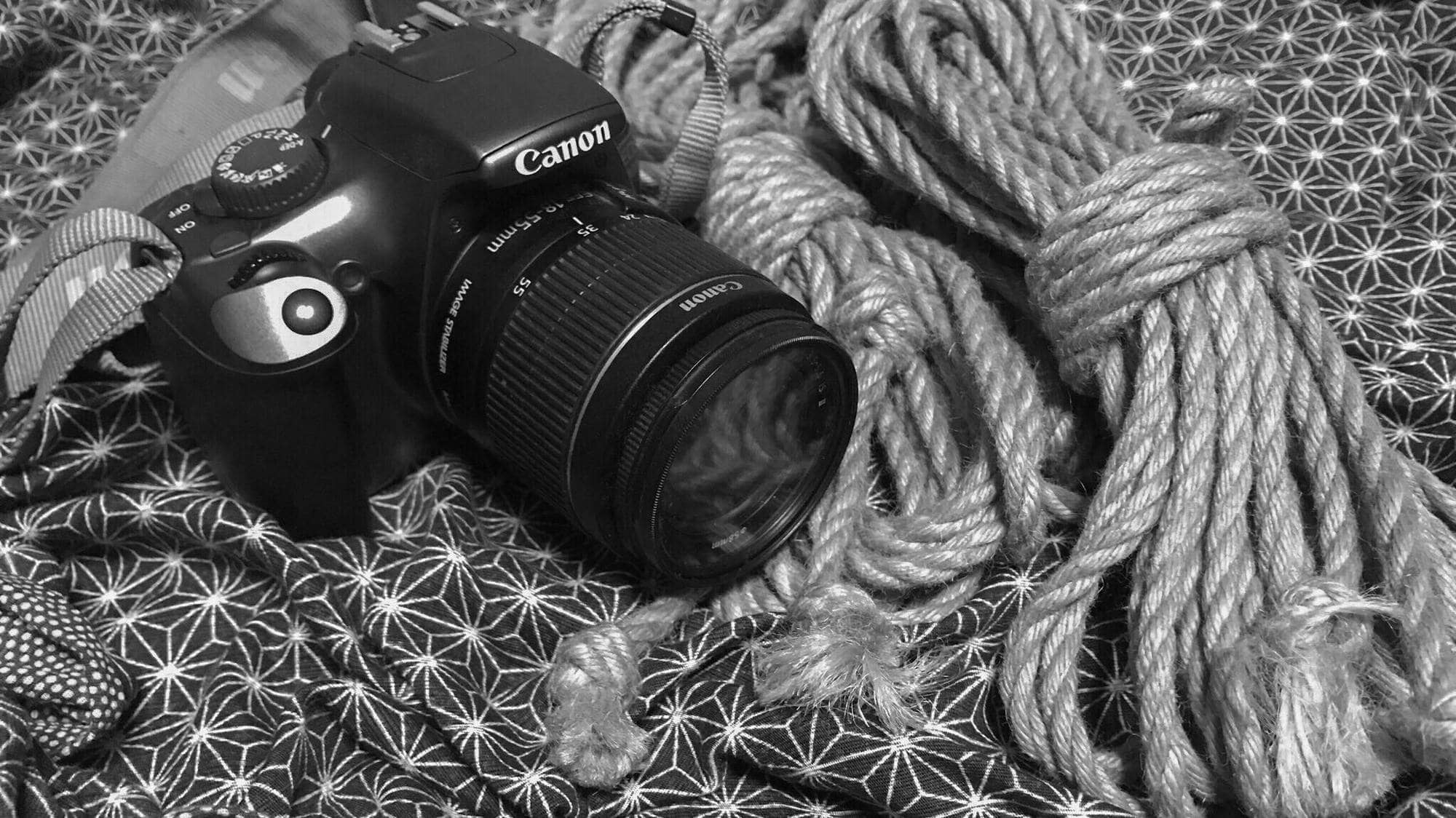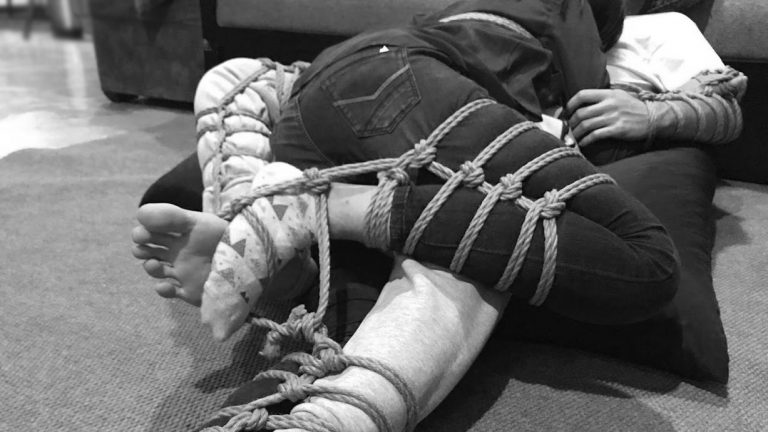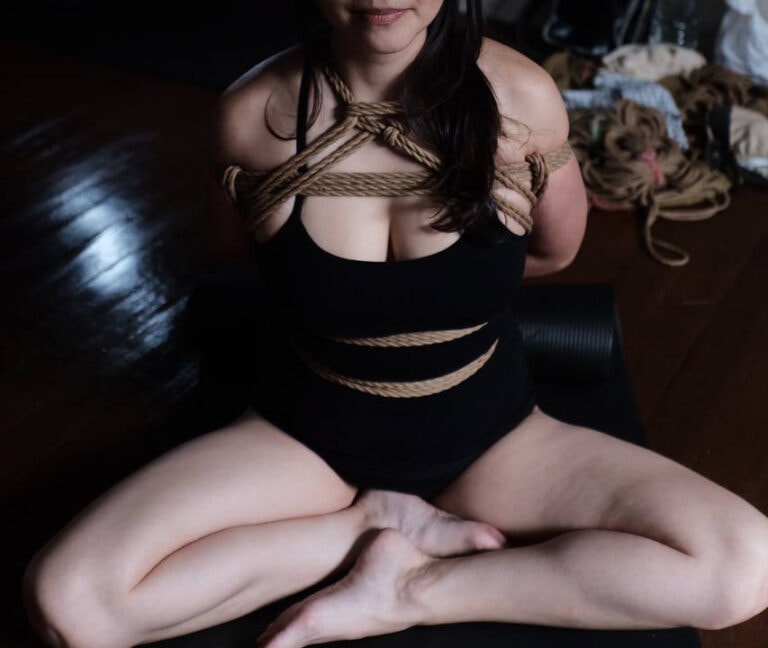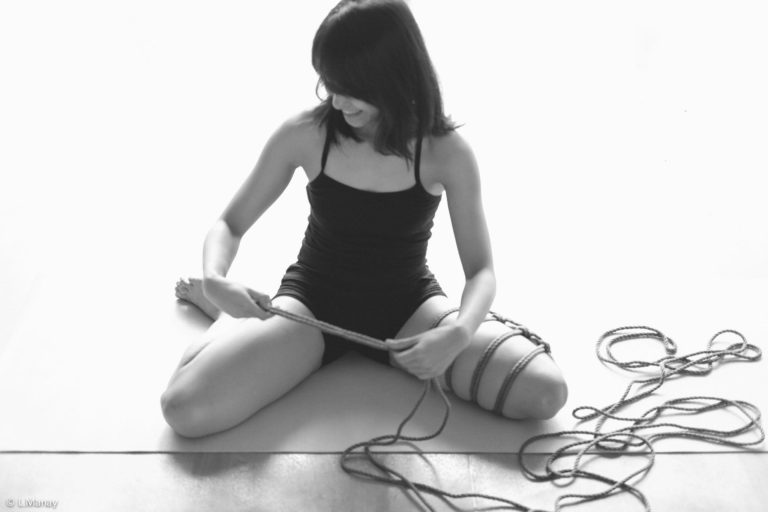We were recently told of an accident involving a bondage photoshoot and thought this would be a good opportunity to talk about kink and its horror stories.
A steamy session at home, a casual photoshoot, or a workshop—these can be (and have been) the settings for accidents if we aren’t careful.
We work actively to avoid negligence or actual actions that lead to people passing out in rope, falling, getting left alone and accidentally suffocating, or causing nerve injuries that take away people’s control over their limbs.
It’s a scary prospect when we consider how long recovery from these injuries can take—from days to months, if at all.
That’s why we as rope artists are encouraged to do our best in managing said risks by studying as much as we could on how the body works, how rope behaves, and how they dance with each other.
So just imagine how much riskier things become when people don’t educate their partners about what they’re getting into?
Responsible Kinkiness
Simply dragging a friend to participate in bondage without the necessary safety discussion is unnecessarily dangerous.
Kink practitioners are strongly encouraged to adhere to certain codes or safety guidelines that allow us to ethically practice our favorite kinks—even explicitly dangerous ones like bondage (that require different guidelines like RACK or PRICK).
Failing to do that just isn’t acceptable behavior for BDSM practitioners anywhere.
To actively/willfully choose actions that do not respect your partner enough to fully inform them of the risks, actively prevent/mitigate them, and avoid responsibility—this is what blurs the line between kinksters and abusers.
That line has to be observed. Especially if we’re trying to open up to the larger community in the hopes they’ll understand and accept our practices.
Here’s what I hope you can take away from this post:
1. Play within your skill level.
Bondage in all its forms is dangerous and suspending a human body from the ceiling is a highly advanced and dangerous example. It increases the risk of falling, strangulation, nerve damage, and more due to additional factors like the extra force applied by gravity through one’s full body weight, etc.
Stick to the ground until you have been properly trained on how to fly—and even then, be careful about matching your confidence with what your skills can execute as safely as you can.
As tops, being properly, adequately, and rigorously trained isn’t just for our benefit. It’s for our partners who will suffer the brunt of any and all mistakes we make. It is easy to be overconfident when the life potentially at risk isn’t ours so let’s try to temper our eagerness with calm caution so that we can be responsible guardians of the people in our care.
As bottoms, it is easy for us to be overly trusting when someone else offers to be in control and showers us with assurances that they know what they’re doing. It’s our job to be personally responsible too: so perform your due diligence and research the person you’re about to entrust your life and limbs to (with proof), as well as how to recognize rope bondage that is done well, and the warning signs of serious injuries, so that we can be active participants in the scene we’re engaging in.
Can’t sufficiently check on your own because you’re new? Ask several local community members to get a well rounded opinion.
Side note: If you already know that someone has a history of being unreliable for kink practices, you should perform your own risk analysis and employ your best judgement about whether you should continue to scene with them.
If you want to grow in skill in a more controlled environment where people with experience can answer your questions or offer constructive feedback, know that you are always invited to join the various community events, skill-sharing sessions, and rope jams by the various groups here in Metro Manila.
2. Trust—but verify.
It doesn’t matter if it doesn’t feel sexy. Losing our jobs, limbs, or lives isn’t sexy—and all it takes is an instant for a permanent injury to take place.
Talk to your prospective partners and verify if their claims are true. Study like hell. Don’t put others at risk because you don’t want to do the work.
To the more experienced practitioner:
> Make sure that you are adequately informing your potential partners of exactly what both of you are going into, including the risks, preventive steps both of you should/will be performing, and what your plans are in case of emergencies. How do you two plan to take responsibility when an accident happens?
Ironing these out beforehand (perhaps through an orientation—or better yet, a written agreement) will help both of you stay calm should things go poorly.
Remember, you have more experience in this department and are crucial in starting your partner’s kinky journey safely.
If you don’t feel equipped to handle that responsibility, get in touch with the community and ask for a helping hand.
To the newbie/less experienced practitioner:
> No matter how impressive, famous, or popular a prospective partner may be, don’t hesitate to verify their claims by contacting members of the local community for a background check.
You have a right to know about their history, previous accidents if any, and what they’ve learned from the experience—and be given proof!
If you don’t know anyone from the local community, you can sign up to Fetlife and join the various groups—or shoot us a PM on Facebook/email at [email protected] and I’ll answer whichever questions I can.
Remember that even experts and established rope masters/experienced rope models can make mistakes and suffer accidents. This doesn’t necessarily make them bad people, but knowing their choices/responses during the accident and the time following it can help you decide better if they are someone one you feel comfortable trusting your body and self with.
Because bondage will always be dangerous. We can never make it 100% safe, but every step we take (like the suggestions outlined here) all go a long way in terms of reducing the level of risk as much as we can.
3. Bondage + photography = Bondage photography?
It’s not that easy.
Being able to do bondage in the bedroom or during play doesn’t mean that we can automatically do bondage on stage, before a class, or behind the camera. Each context has its unique quirks and considerations that merit adaptations.
If you are interested in bondage photography but don’t have the skill, discipline, or manpower, I suggest you see if you can hire (a) one of the local riggers who can create fast, structurally sound, and sustainable work, and (b) an experienced model who knows how to work within rope, can properly distinguish between circulation loss and nerve damage, and has a level of endurance for bondage that gives your rigger enough time to work, and the photographer to take pictures.
This way, you wouldn’t need to be wearing so many hats/juggling so many roles and can focus on taking better shots WHILE better protecting your models from harm.
Having fun, staying safe
We are all fans of this art form and here to have fun.
With everyone’s help and our own personal contribution, we’ll have an easier time with becoming accepted enough to practice in the open and without judgment!
Tulong-tulongan!
Cheers!











